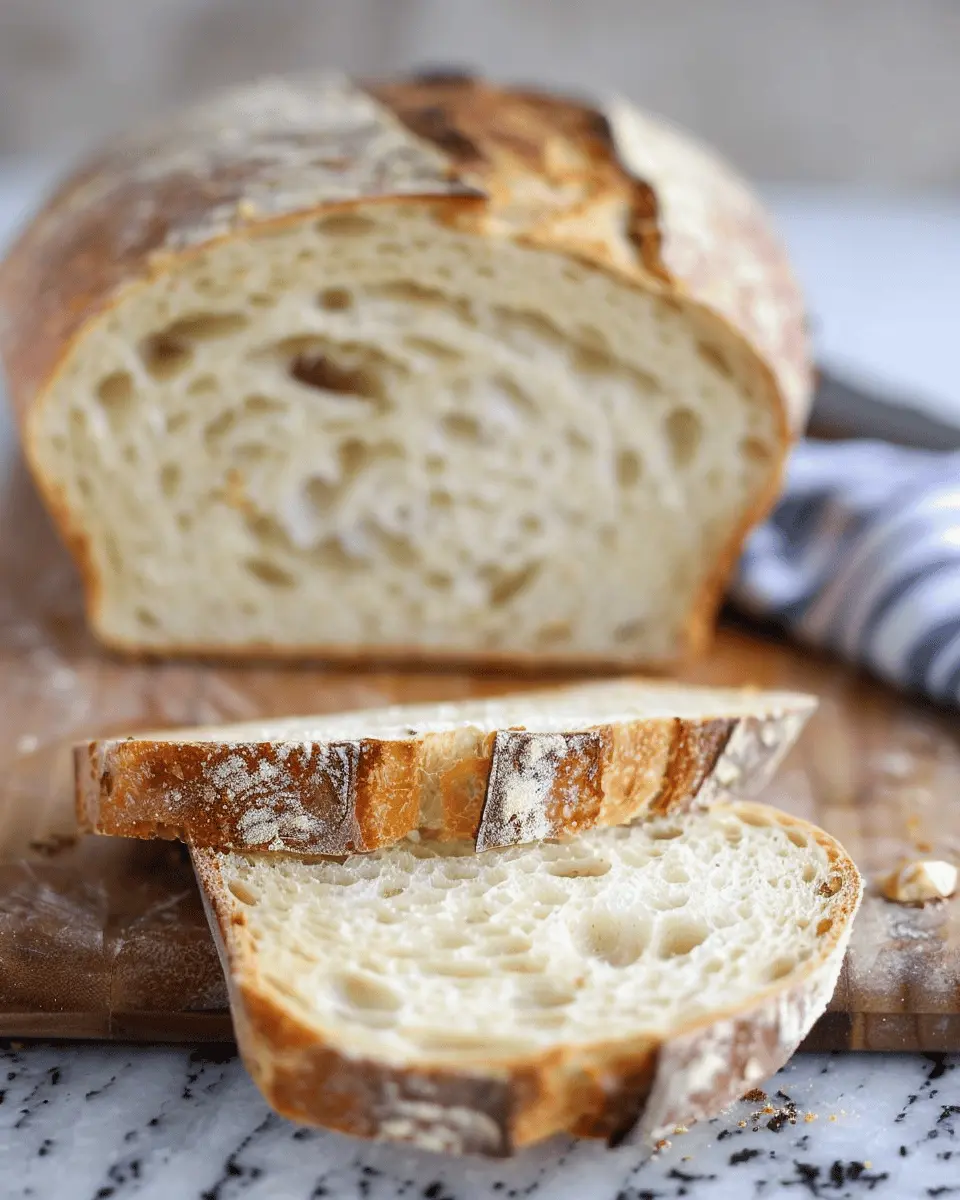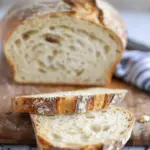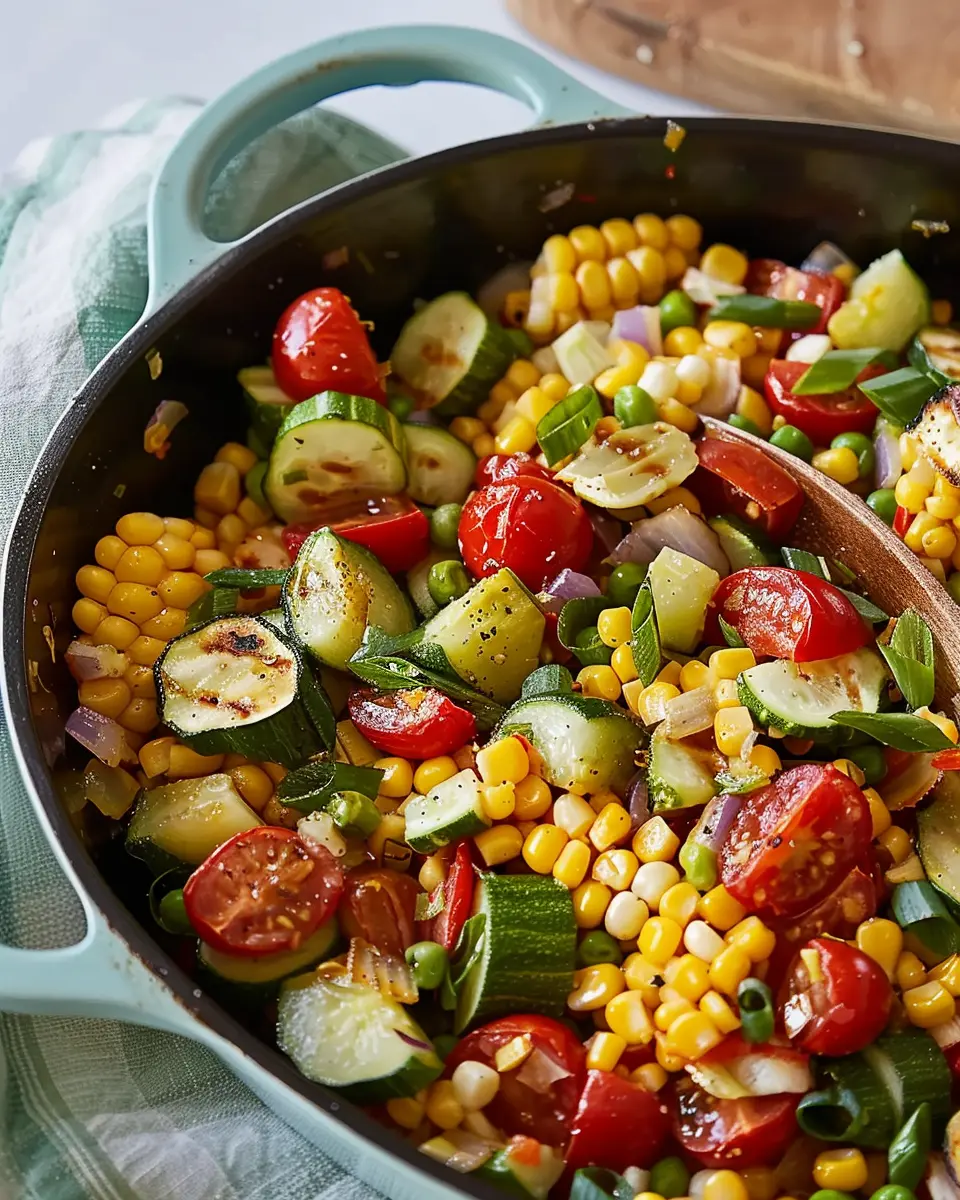Introduction to Soft Sourdough Bread
Making soft sourdough bread at home can truly transform your weekly routine, especially for young professionals who often juggle a busy lifestyle. Imagine coming home after a long day only to indulge in the delightful aroma of freshly baked bread filling your kitchen. Baking your own soft sourdough bread is not just about the taste; it’s about the experience, the satisfaction of creating something from scratch.
Why Homemade Sourdough is a Game Changer for Young Professionals
Let’s face it: life can get hectic, and the last thing you want to do is settle for store-bought bread that lacks flavor and texture. Here’s why diving into the world of homemade sourdough is a fantastic option:
-
Healthier Ingredients: When you bake at home, you have complete control over what goes into your bread. You can opt for organic flours and skip preservatives, making your soft sourdough bread not just delicious but healthier too.
-
Budget-Friendly: Buying high-quality bread can add up, especially if you’re trying to eat well. Making your own allows you to save money while enjoying gourmet bread at home.
-
Mindfulness and Relaxation: The act of kneading and shaping dough can be meditative. It’s a great way to unwind, providing a mindful break from your busy schedule.
-
Aesthetic Appeal: There’s something incredibly rewarding about pulling a loaf of beautifully risen soft sourdough out of the oven. It’s the perfect centerpiece for gatherings and a lovely way to impress friends or family.
Plus, studies by food scientists reveal that sourdough fermentation can increase the bioavailability of certain nutrients, making your bread not just tasty but nourishing (source: ResearchGate).
So grab your ingredients and let’s embark on this baking adventure! Soon, you’ll find not just the taste but the entire process enriching your life. Stay tuned for the full recipe, where I’ll walk you through every step to create a loaf that’s soft, tangy, and authentically yours.
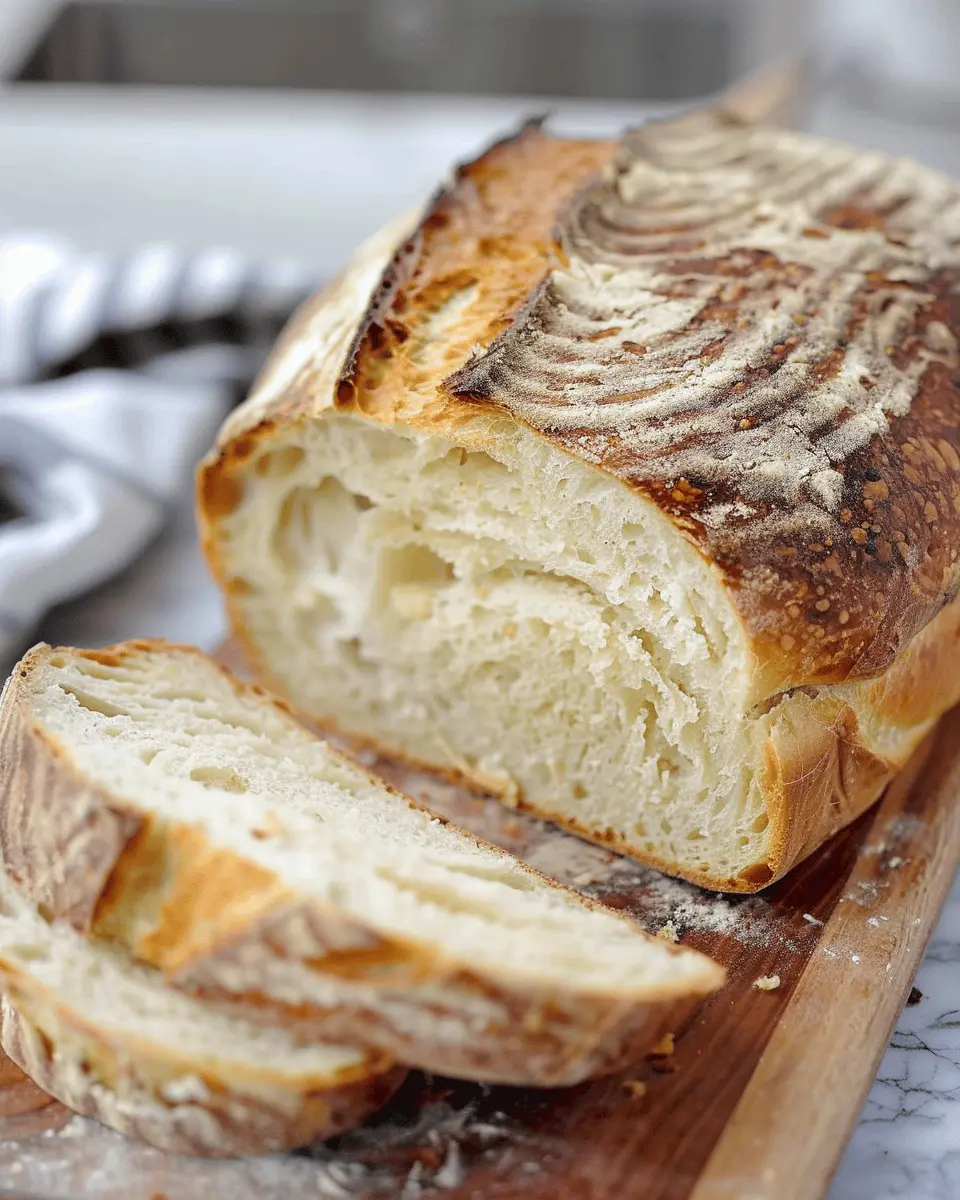
Ingredients for Soft Sourdough Bread
Essential ingredients for the perfect loaf
Creating the soft sourdough bread of your dreams starts with a few key ingredients:
- Active sourdough starter: This is the backbone of your bread, bringing that signature tangy flavor and texture.
- Bread flour: For a light and airy crumb, opt for high-protein bread flour. The extra gluten will help give your loaf that chewy quality.
- Water: It’s crucial for hydration! Use filtered water if possible, as chlorine can hinder the fermentation process.
- Salt: A must for enhancing flavor. It also strengthens the dough while controlling yeast activity.
Optional ingredients to customize your bread
Feel free to get creative! While the essentials set the stage, these optional ingredients can take your soft sourdough bread to the next level:
- Seeds: Add sunflower or pumpkin seeds for texture and nutrition.
- Herbs: Fresh or dried herbs like rosemary or thyme can give your loaf a unique twist.
- Honey or maple syrup: A hint of sweetness can beautifully balance the sourness of the bread.
- Cheese: Incorporating a handful of shredded cheese can create deliciously cheesy pockets throughout!
Check out resources like King Arthur Baking, where you can dive deeper into the fascinating world of sourdough baking and find tips that can inspire your culinary journey. Isn’t it exciting how a simple loaf of bread can become a canvas for your creativity?
Preparing Soft Sourdough Bread
Creating the perfect soft sourdough bread is not just a baking task; it’s an inviting sensory experience that can elevate your home cooking. If you’ve ever been intimidated by the idea of making sourdough, fear not! With a little patience and some simple steps, you’ll impress your friends and family with this homemade delight. Let’s walk through the beautiful process together.
Mix the dough
To get started, gather your ingredients:
- 500 grams of all-purpose flour
- 350 grams of water (room temperature)
- 100 grams of active sourdough starter
- 10 grams of salt
Start by mixing the flour and water in a large bowl until there are no dry bits left. Allow it to hydrate for about 30 minutes—this stage is called autolyse, and it allows the flour to absorb the water fully, making the dough easier to handle later. Once that’s done, add your sourdough starter and salt, mixing everything together until it forms a cohesive dough.
Stretch and fold the dough
This step is all about developing the gluten, which gives your soft sourdough bread that desirable texture. This technique may sound complex, but it’s straightforward. After letting the dough rest for 30 minutes post-mix, we’ll perform a series of stretch and folds.
- Wet your hands to prevent sticking.
- Gently pull one edge of the dough and fold it towards the center.
- Rotate the bowl 90 degrees and repeat until you’ve folded all four sides into the center.
You’ll want to perform this stretch and fold technique every 30 minutes for about 2 hours. Don’t worry; this isn’t a full-time job! It’s a perfect time to binge-watch your favorite show while you check in on your dough.
Bulk fermentation guide
During bulk fermentation, the dough begins to rise and develop flavor. This process generally takes 4 to 6 hours at room temperature, but ideally, you should observe how your dough is behaving. Look for:
- Dough doubling in size: This indicates fermentation is happening.
- Bubbles forming: These are signs that the yeast is active.
For more in-depth fermentation tips, you can check out resources from the King Arthur Baking Company.
Shape the dough
Once your dough has completed its bulk rise, it’s time to shape it into a loaf. Gently transfer the dough onto a lightly floured surface.
- Using your hands, shape it into a round or oval by tucking in the edges towards the center.
- Allow it to rest for about 15 minutes to relax the gluten.
- After resting, reshape it into your desired form. For a classic round loaf, flip it upside down and use your hands to rotate and tighten the shape.
Let your shaped dough proof for another 1-2 hours, or until it has visibly puffed up.
Baking process
Now, the moment you’ve been waiting for! Preheat your oven to 450°F (230°C), placing a Dutch oven inside as it heats. This step ensures a lovely, steamy environment for your bread, resulting in that soft crust we all love.
Once preheated, carefully transfer your dough into the hot Dutch oven. For an aesthetic touch, score the top of your loaf with a sharp knife–this allows the bread to expand beautifully in the oven. Cover with the lid and bake for about 30 minutes. After that, remove the lid and let it bake for an additional 15-20 minutes, or until it’s deep golden brown.
Let your soft sourdough bread cool on a wire rack for at least an hour before slicing. Trust me, the anticipation will be worth it when you cut into that warm, pillowy bread.
By following these steps, you will make a loaf of soft sourdough bread that brings warmth to your kitchen and joy to your taste buds. Happy baking!
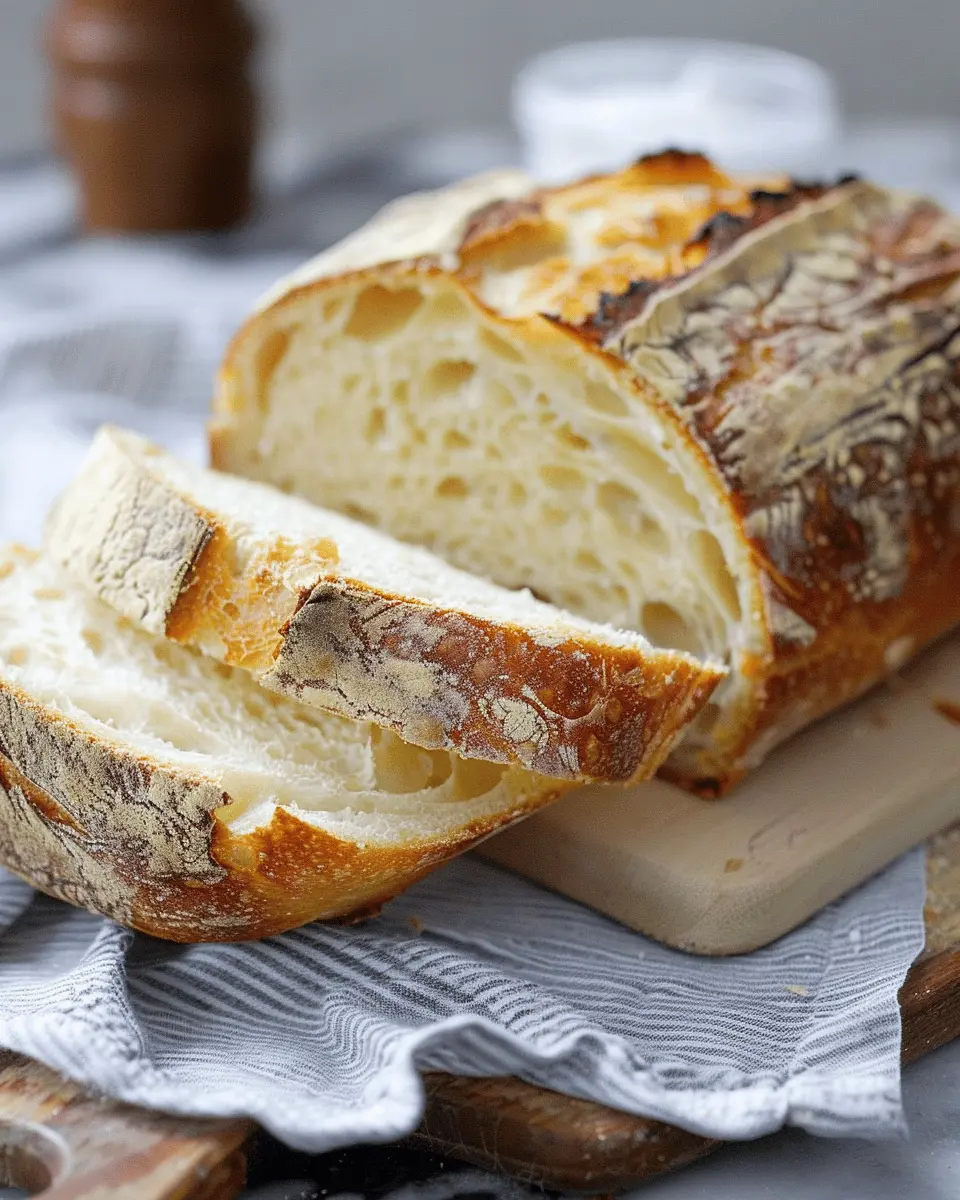
Variations of Soft Sourdough Bread
Soft Sourdough Rolls
Who doesn’t love a warm, fluffy roll? Soft sourdough rolls are perfect for dinner gatherings or just snacking at home. They carry the delightful tang of sourdough, but with an extra soft crumb that melts in your mouth. To create these rolls, simply shape your sourdough dough into smaller portions and allow them to rise before baking. Try baking them in a round cake pan for a thoughtful presentation. You can even brush them with garlic butter just before serving for an irresistible treat!
Adding Herbs and Spices for Extra Flavor
Elevate your soft sourdough bread with an array of herbs and spices! Consider integrating dried oregano, rosemary, or even a dash of cumin into your dough during mixing. These additions not only offer a flavor punch but turn every slice into an aromatic experience. Why not experiment with sun-dried tomatoes or grated cheese for a gourmet twist?
For those looking to dive deeper into flavor combinations, consider checking out resources on sourdough baking techniques from places like King Arthur Baking. They offer a wealth of knowledge on how to tweak your recipes for even more delicious results.
Incorporating these variations into your sourdough repertoire will definitely keep things exciting. Do you have a particular spice or herb in mind? Give it a try! Each tiny adjustment can take your soft sourdough bread from ordinary to extraordinary. After all, the journey of sourdough is about experimentation—so don’t shy away from trying something new!
Cooking Notes for Soft Sourdough Bread
Importance of Hydration Levels
When it comes to crafting soft sourdough bread, hydration is key. Higher hydration levels contribute to a softer, crustier bread, which is precisely what we aim for. A dough that’s too dry can yield a dense loaf, so consider opting for a hydration level of around 75%. This might feel a bit sticky at first, but trust me, the end result will be worth it! Additionally, a wetter dough can enhance gluten development, leading to that airy crumb we all love. If you want to dive deeper into hydration, check out this informative article on The Science of Sourdough.
Tips for Successful Dough Handling
Handling dough can be a bit tricky, especially for beginners. Here are some tips to help you master your soft sourdough bread:
- Keep your hands wet: Dipping your hands in water prevents the dough from sticking.
- Use a bench scraper: This handy tool helps with shaping and managing the dough.
- Practice ‘stretch and fold’: Instead of kneading, gently stretch and fold the dough during bulk fermentation to build strength without overworking it.
Remember, every baker develops their own rhythm, so don’t hesitate to experiment and discover what works best for you!
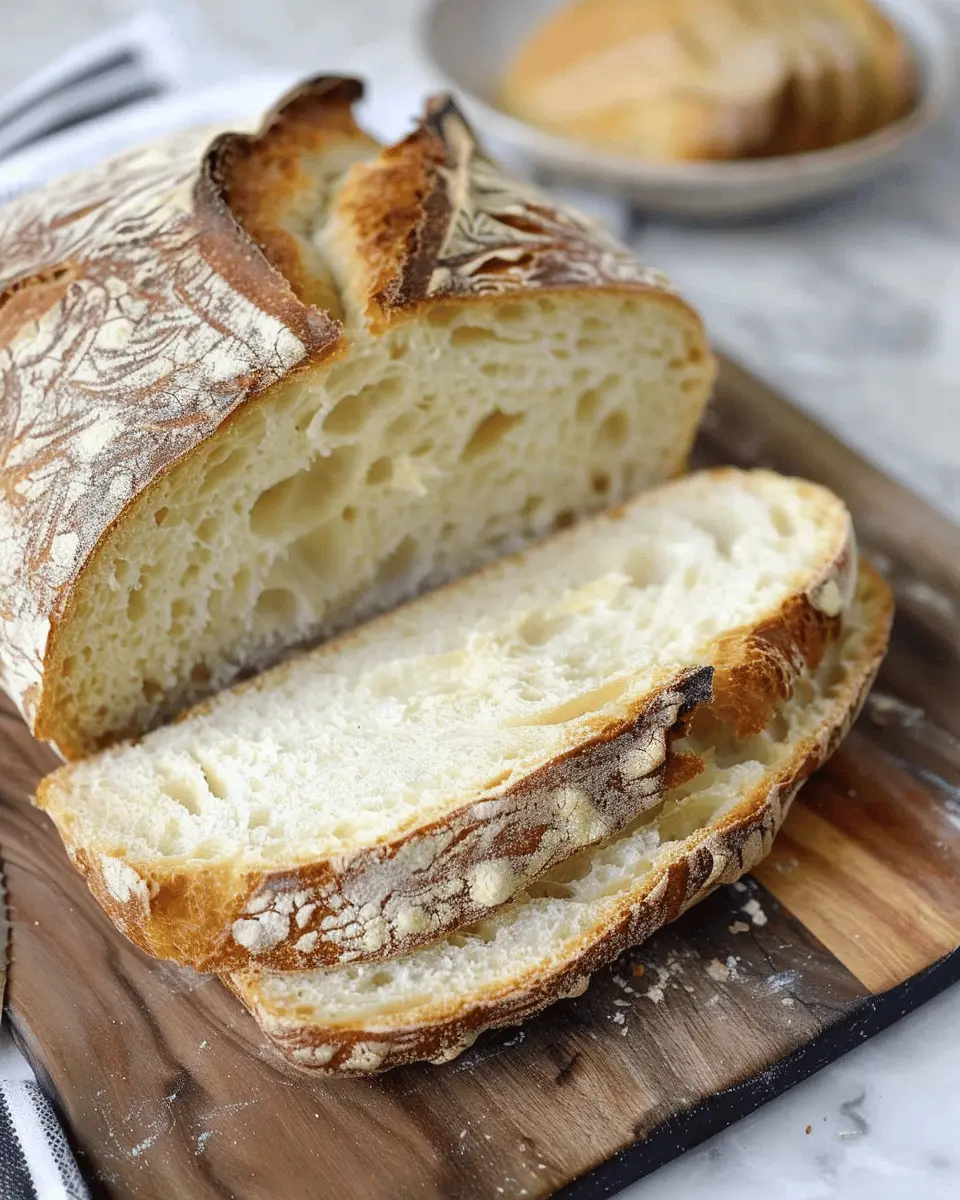
Serving suggestions for Soft Sourdough Bread
Perfect pairings for sandwiches
There’s nothing quite like a soft sourdough bread sandwich to elevate your lunch game. The tangy flavor and chewy texture make it a perfect base for a variety of fillings. Consider crafting a delicious turkey bacon and avocado sandwich for a nourishing meal. The rich, buttery flavor of the avocado complements the bread’s unique sourness beautifully. Alternatively, a classic chicken ham sandwich with fresh greens and a tangy mustard spread can make for a delightful workday lunch. Just imagine biting into that soft crust at your favorite park—heavenly!
Don’t forget to explore spreads like hummus or pesto to enhance flavors. If you’re feeling adventurous, try adding some roasted vegetables for a hearty, vegetarian twist.
Creative uses for leftover bread
If you find yourself with extra soft sourdough bread, don’t toss it! Transform those leftover slices into delicious croutons by cubing them, tossing with olive oil, and seasoning, then baking until crispy. Another delightful option is making a rich, creamy bread pudding. Your friends will be impressed by your resourcefulness!
For even more ideas, check out this guide on using leftover bread creatively here. You’ll discover a world of possibilities while minimizing food waste!
Time breakdown for Soft Sourdough Bread
Preparation time
Making soft sourdough bread starts with about 30 minutes of active preparation. This includes mixing the ingredients and kneading the dough. Don’t rush this part; your hands are your best tools!
Fermentation time
The fermentation time is where the magic happens. Allow your dough to rest for around 4 to 6 hours, depending on your kitchen temperature. For optimal flavor, consider adopting a long, slow fermentation using the cold method, which involves placing the dough in the fridge overnight.
Baking time
Finally, the baking process takes about 30 to 40 minutes. Preheat your oven ahead of time, and remember to let the bread cool on a rack for at least 20 minutes before slicing. Patience is key to achieving that perfect soft crumb!
Ready to enjoy your homemade soft sourdough bread? For more baking tips, check out King Arthur Baking for expert advice and techniques!
Nutritional facts for Soft Sourdough Bread
Calories per slice
When it comes to soft sourdough bread, you might be wondering about its calorie content, especially if you’re enjoying it as part of your meal. On average, a single slice of this airy delight contains around 80-100 calories. It’s surprisingly lower in calories compared to some other types of bread, making it a great choice for sandwiches or toast.
Macronutrient breakdown
Now, let’s break down the macro-benefits of soft sourdough bread:
- Carbohydrates: Approximately 15-20 grams per slice, providing a solid energy source.
- Protein: Around 3-4 grams, supporting muscle repair and growth.
- Fat: Typically less than 1 gram, keeping it light and heart-healthy.
This nutritional profile highlights why many people incorporate sourdough into their diets. Plus, the fermentation process helps with digestibility, making it a fantastic option for those with gluten sensitivities. Curious to see how it stacks up against other bread types? Check out this comprehensive guide for more details!
FAQs about Soft Sourdough Bread
Baking soft sourdough bread can be an incredibly rewarding experience, but it often comes with a few questions. Here are some of the most common inquiries from fellow sourdough enthusiasts!
How do I know if my sourdough is ready to bake?
Determining if your dough is ready can be a bit of an art, but there are a few signs to look for:
- Puffy Appearance: The dough should look soft and puffy, having at least doubled in size during fermentation.
- Bubbles: Look for small bubbles on the surface; this indicates active fermentation.
- Poke Test: Gently poke the dough with your finger—if the indentation slowly springs back, it’s ready!
For more tips on sourdough baking timing, check out this helpful guide here.
What can I do if my dough is too sticky?
Sticky dough can be a hassle, but it’s usually fixable. Here’s what you can try:
- Flour Your Hands: Lightly dust your hands with flour while shaping your dough; this helps manage stickiness.
- Add a Little Flour: If the dough is overly sticky, you can sprinkle in small amounts of flour (just a tablespoon or so) during the kneading process.
- Use Wet Hands: Another approach is to wet your hands instead of flouring them, which can reduce stickiness while you’re working with the dough.
Can I use whole wheat flour instead of all-purpose flour?
Absolutely! Whole wheat flour can add a wonderful nutty flavor and extra nutrients to your soft sourdough bread. However, because it absorbs more water, consider adjusting your hydration levels. You may need to add a little extra water or slightly decrease the flour amount to maintain the right consistency. Experimenting with different flours can be a fun adventure in baking!
Baking is a learning process, so don’t hesitate to try out these tips and enjoy your journey to creating the perfect soft sourdough bread!
Conclusion on Soft Sourdough Bread
Embracing the joys of homemade bread
Making soft sourdough bread isn’t just about creating a loaf; it’s about reviving age-old traditions and discovering the satisfaction that comes with baking your own bread. The process, from nurturing your starter to savoring the scent that fills your kitchen, brings a unique joy that store-bought bread simply can’t replicate.
Incorporating this wholesome bread into your meals can elevate your dishes while providing a nourishing alternative. Share your creations with friends and family, or enjoy slices slathered with butter and your favorite preserves. For a delightful twist, try pairing it with a hearty soup or a fresh salad. Check out further information on sourdough techniques on King Arthur Baking. Happy baking!
PrintSoft Sourdough Bread Made Easy: Your New Favorite Recipe
Learn how to make soft and fluffy sourdough bread at home with this easy recipe!
- Prep Time: 30 minutes
- Cook Time: 45 minutes
- Total Time: 4 hours 15 minutes
- Yield: 1 loaf 1x
- Category: Bread
- Method: Baking
- Cuisine: American
- Diet: Vegetarian
Ingredients
- 500 grams bread flour
- 350 grams water
- 150 grams active sourdough starter
- 10 grams salt
Instructions
- In a large bowl, combine bread flour and water until there are no dry spots. Let it rest for 30 minutes.
- Add the sourdough starter and salt. Mix until well incorporated.
- Cover the bowl and let the dough rise at room temperature for about 4 hours, stretching and folding every hour.
- Shape the dough into a round loaf and place it in a floured proofing basket.
- Let the dough proof for 1-2 hours until it has noticeably risen.
- Preheat the oven to 450°F (232°C) with a Dutch oven inside.
- Carefully transfer the dough into the hot Dutch oven and cover it with the lid.
- Bake for 30 minutes, then remove the lid and bake for an additional 15 minutes or until golden brown.
- Let it cool on a wire rack before slicing.
Notes
- For best results, use high-quality ingredients.
- Adjust the hydration if necessary based on your flour type.
Nutrition
- Serving Size: 1 slice
- Calories: 150
- Sugar: 0.5 grams
- Sodium: 250 milligrams
- Fat: 1 gram
- Saturated Fat: 0 grams
- Unsaturated Fat: 0.5 grams
- Trans Fat: 0 grams
- Carbohydrates: 30 grams
- Fiber: 1 gram
- Protein: 5 grams
- Cholesterol: 0 milligrams
Keywords: Soft Sourdough Bread, Easy Sourdough Recipe, Homemade Bread
